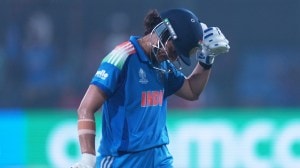Now the ball is back in bowlers’ court
Skipper Rahul Dravid’s five-bowler theory could come into play in the Caribbean with powerplay and field restrictions

Indian skipper Rahul Dravid has always been a strong advocate of the five-bowler theory. As he likes to put it, he has “used five bowlers in the playing eleven whenever there’s been an opportunity”, and at the World Cup, he insisted, will be no different, if circumstances permit.
With the fielding restrictions increased to 20 overs, the World Cup will add further pressure on bowlers to contain batsmen early on, on tracks widely speculated to be run-making strips. And with run-making having reached a different level (read: South Africa chasing 434, New Zealand chasing 336 and 346), it is important that the bowling attack is as strong as the team’s batting, if not better.
“Batsmen spend a lot of time analysing bowlers on videos and with all other technologies available. Leave alone helpful conditions, the powerplays and fielding restrictions make a lot of difference,” says Ajit Agarkar, who’ll be among India’s main attacking bowlers.
Along with Zaheer Khan, Agarkar is the most experienced medium-pacer in the side and the duo is looking forward to the best possible starts during the tournament. From the last edition, where the two were part of the squad under Sourav Ganguly, they remember the obscurities surrounding the team’s bowling attack, particularly in the clash with Pakistan and in the final against Australia.
“To restrict a batsman in the initial overs can be most beneficial. But it has a lot to do with how the day progresses in terms of conditions, the bowler’s luck, umpiring and all. There can be an early catch dropped or an absolute stunner held. All this can make a world of a difference,” says the wiry Mumbai pacer.
Zaheer, on the other hand, is convinced that rhythm alone defines the bowler’s confidence on a particular day. “If the bowler can feel he’s pitching it right, half the job is done. Speed, to speak, is quite an illusion. I personally have never tried to bowl fast at the cost of line right. If everything goes right and I am able to bowl at a good pace, all the more better. But eventually, it’s about pitching at the right place,” says the left-arm bowler.
Zaheer’s statement stems from the same argument that the bowler needs to be aware that batsmen are looking to score faster in the first few overs.
Irfan Pathan, India’s leading wicket-taker with the new ball in the past one year, is struggling. Pathan’s claim to fame with the ball was his ability to pick early wickets and he, unfortunately, finds the mojo missing. “There can be bad days, just like good days. To add to it, there are factors which assist or hamper the bowler’s rhythm. Even if the going is tough, it won’t last for ever,” he says looking for the turnaround.
And lastly, there’s Sreesanth, whose confidence is up from the fact that he’s part of such a big tournament. “I keep telling to myself that I have to be charged up. That helps me deliver my best,” he says. The Kerala medium-pacer believes that the more he feels thrilled about the occasion, the better are his chances of hitting the right spot. “I’ll be looking to keep myself in that shape throughout the tournament,” he says.
India have a good mix of youngsters and seniors to take care of the 50 overs, given the fact that they are touring along with the likes of Harbhajan Singh and Anil Kumble as the two slow bowlers. “The bowlers are fit and that’s heartening. To add to it, we have a good mix,” says Dravid.
Whether or not he gets the opportunity to use five at a time, Dravid will surely expect that his bowlers deliver the goods for him.





- 01
- 02
- 03
- 04
- 05


























